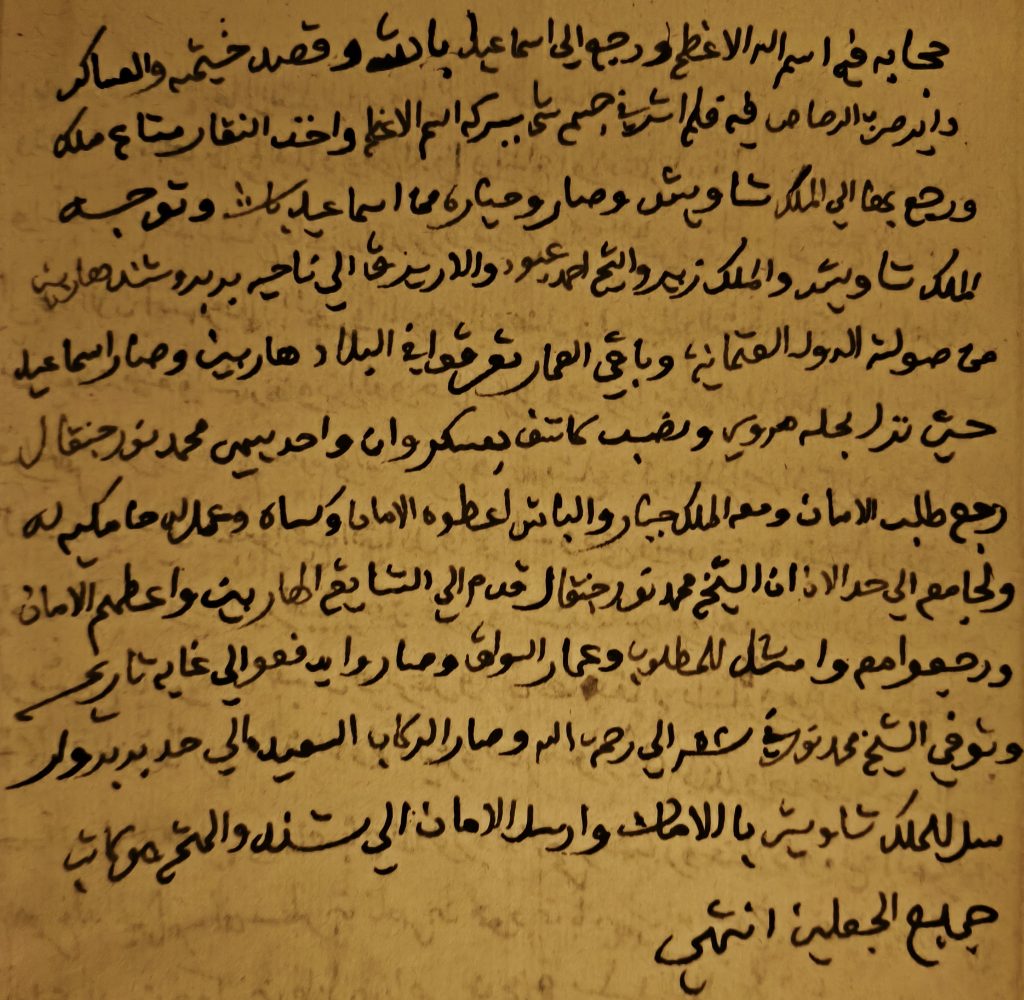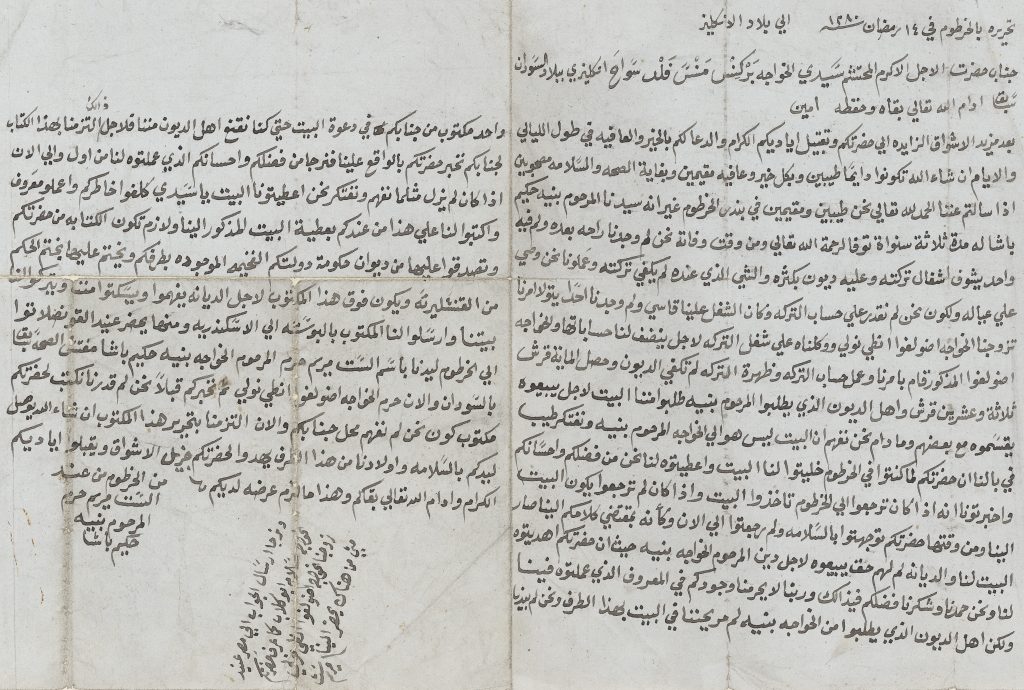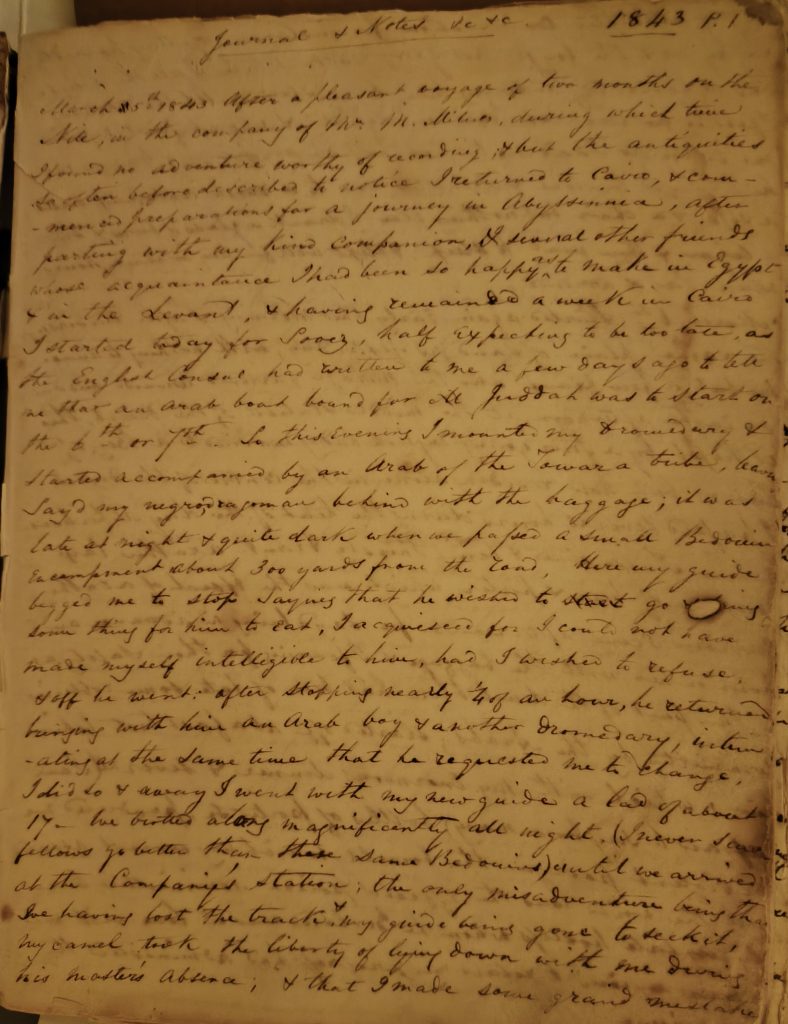April 2, 2025, by Chloe
Life in 19th century Ethiopia
One of the most famous 19th-century travellers who makes an appearance in our collection is Mansfield Parkyns (1823-1894). Parkyns, a younger son of Sir Thomas Parkyns of Bunny Hall, Nottinghamshire, decided to leave England abruptly aged 19 in 1842 without making his family aware of his plans, or keeping them updated regarding his whereabouts…
His trip was a bit longer than the standard gap year, going on for nine years, and by the time he returned many people had long since assumed that he had died. Unsurprisingly, he made it a considerable distance during that time, making his way around significant chunks of Europe, Africa and Western Asia – but today he is by far best known for the three years he spent living in Ethiopia, then known as Abyssinia.
Parkyns relayed these events in a journal which survives in our collections, providing details of his travels on the Upper Nile, his three-year residence in Ethiopia, and his return via Khartoum. It appears to have been written as an account for his family and remained in private hands for many years. The work can be described as part journal, and part geographical, anthropological and political survey of the country. Parkyns’ interest in and adaptation to local customs brought him acceptance within the community, and married an Abyssinian woman, by whom he had a son.
Years later, in 1853, he authored an extensive book on the subject of the time he spent in that country, entitled ‘’Life in Abyssinia, being Notes collected during three years residence and travel in that country’ (London, 1853).’ At 850 pages, it is far longer than the journal we hold in our collections – and this, along with the fact that Parkyns himself tells us that he lost his original journal in 1845, and then had to re-write based on a combination of memory and a few surviving pages means that we should probably take his recollections with a fairly large grain of salt. Contemporary reviewers also remained somewhat sceptical, based on the lukewarm reception his publication received in the press.

Pa X 2, A fragment on the history of the Sudan, for a collection of Arabic manuscripts belonging to Mansfield Parkyns; early 19th century
That said, ‘Life in Abyssinia’ was, for a long time, considered to be a key text on the history of Ethiopia for readers in English due to its detailed description of the local culture – although perhaps that was due to a lack of competition rather than a ringing endorsement of its accuracy. That said, we know from Parkyns’ correspondence that he did take familiarising himself with the languages and cultures which he came into contact with seriously. For instance, he successfully learnt Arabic and was still using the language to correspond with Maryam, an old friend in that country twenty years later.

Letter from Maryam, wife of the late Nabih Hakim Pasha to Mansfield Parkyns, dated Khartoum, Ramadan 1280 A.H. (February 1864 A.D.); Pa X 6
If you would like to read Parkyns’ journal or correspondence for yourself, why not make a visit to our reading room? To find out more, or to book an appointment today, please contact us at mss-library@nottingham.ac.uk.
No comments yet, fill out a comment to be the first



Leave a Reply